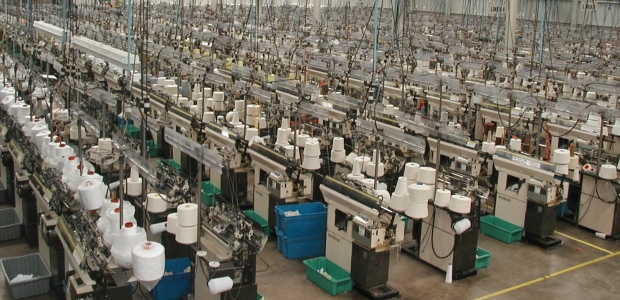
The Golden Era of Hand Protection
Just as the medieval knights required task-specific protection, today's worker is more of an industrial athlete requiring gear to enhance performance.
- By Larry Garner
- Aug 01, 2017
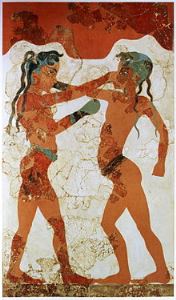 History does repeat itself, even within the scope of hand protection. Thousands of years ago, as the image shows, human beings were looking to protect their hands during boxing matches. Fast forward to the twelfth century, and medieval knights were using metal mesh gloves for hand protection. Now, during the modern 21st century, history is repeating itself yet again, as the glove industry uses metal mesh gloves for protecting employees in extreme conditions, just as those medieval knights did more than 800 years ago.
History does repeat itself, even within the scope of hand protection. Thousands of years ago, as the image shows, human beings were looking to protect their hands during boxing matches. Fast forward to the twelfth century, and medieval knights were using metal mesh gloves for hand protection. Now, during the modern 21st century, history is repeating itself yet again, as the glove industry uses metal mesh gloves for protecting employees in extreme conditions, just as those medieval knights did more than 800 years ago.
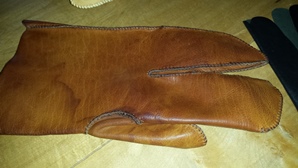
In addition, application-specific glove offerings are nothing new. See the "bow and arrow" glove image from the 15th century, specifically targeting a bowman, equivalent to today's protector (as shown). Today, we no longer have a high demand for bowman gloves, but there are applications needing lightweight cut resistance, while also allowing for premier grip and sense of touch.
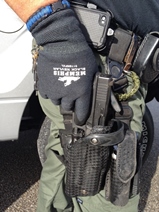
Even though history does repeat itself, it most often repeats itself with technological advancements, both within the manufacturing process and the product. During William Shakespeare's day, leather glove manufacturing tools were designed for an industry requiring a highly labor-intensive process (see the tannery image).
Even the tanning process of the 15th century was ancient by today's standards, using urine as an integral step. Today, glove manufacturing has moved to take advantage of lower labor cost and enhanced facilities.
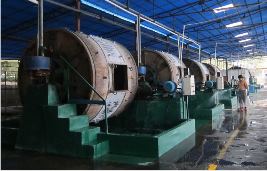
From a product standpoint, our industry has evolved from primarily leather and cotton gloves to an industry where a wide assortment of materials are utilized. The materials provide cut, abrasion, heat, anti-vibration, back of hand, and chemical protection for today's industrial athlete.
Historically speaking, the glove industry's evolution can be identified and categorized when significant technologies afford new opportunities. The past 50 years may be recognized as the Golden Era of Hand Protection.
Consider the following timeline showing our industry's chronological progressions.
16th to 21st Century
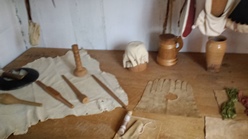 Just as William Shakespeare's father made gloves in 16th century England using leather, much stayed the same way for the next 400-500 years. Up to 1970, leather, cotton, and jersey fabrics represented the bulk of the industry's hand protection offerings.
Just as William Shakespeare's father made gloves in 16th century England using leather, much stayed the same way for the next 400-500 years. Up to 1970, leather, cotton, and jersey fabrics represented the bulk of the industry's hand protection offerings.
The greatest transformations took place within the glove industry starting with the formation of OSHA.
1970:
OSHA was founded in 1970 and its initial PPE standards, initiated as early as 1971 and still in place today, fueled the growth of personal protective equipment.
General Requirements (29 C.F.R. 1910.132)
- Based on the hazard assessment, the employer must select appropriate and properly fitting PPE for use by affected employees.
- Each employee who is required to use PPE must be trained in the proper use of the PPE and be retrained when necessary.
Hand Protection (29 C.F.R. 1910.138)
- Appropriate hand protection must be worn when hands are exposed to hazards such as skin absorption of harmful substances, severe cuts, lacerations or abrasions, punctures, chemical or thermal burns, and harmful temperature extremes.
- Employers must base selection of hand protection on "an evaluation of the performance characteristics of the hand protection in relation to the tasks performed, duration of use and hazards presented."
One of the most significant progressions during the 1970s was the combination of a cotton canvas, clute pattern glove dipped into a latex coating. At this time, the "Nitty Gritty®" glove was a game changer within our industry. Interestingly enough, like today, when any one company has a game-changing success, many others are quick to follow.
Recognize that up until the 1970s, the majority of gloves and safety products were sold and distributed by independently owned safety supply distributors. These independently owned distributors were progressively acquired and disappeared as larger industrial suppliers recognized the potential for growth and the importance of safety products. Likewise, today suppliers include global entities that have added safety products to their mix of consumer products.
1980:
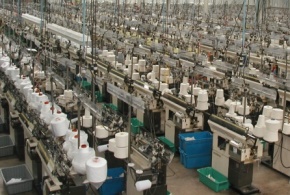 This decade experienced the most significant progression of technology, most notably with the introduction of seamless knit gloves. Manufacturing was automated by utilizing continuous knit machines that required very little labor to produce seamless knit gloves. Early glove production included dotted and flat dip patterns.
This decade experienced the most significant progression of technology, most notably with the introduction of seamless knit gloves. Manufacturing was automated by utilizing continuous knit machines that required very little labor to produce seamless knit gloves. Early glove production included dotted and flat dip patterns.
As dipping of these shells evolved, polymers such as latex, nitrile, neoprene, and PVC were added for various applications and industries.
1990:
More user-friendly styles became available as thinner (higher gauge) seamless knit shells with a wider range of yarn composition evolved to offer greater protection. While cotton/polyester were the original seamless knit offerings, Kevlar® and Dyneema® (Diamond Tech®) plus engineered fibers including stainless steel and synthetic materials were also introduced. This decade also experienced the introduction of disposable nitrile gloves as an alternative to latex disposable gloves in effort to overcome workers' allergies that are still an issue in the present day. Additionally, the International Organization for Standardization (ISO) and the International Electrotechnical Commission (IEC) formed the specialized system for worldwide testing standardization.
2000:
With an increase of polymers being used with seamless knit gloves, our industry shifted toward producing more options for cut protection. Thanks to the American National Standards Institute (ANSI) and the International Safety Equipment Association (ISEA), we had our first cut standard in 2005.
This original rating system has been revised several times, and our industry now adheres to the ANSI/ISEA 105-2016 standard, which went in to effect in January 2016. Recognize that ANSI is a private, non-profit organization that oversees the development of standards in the United States. ISEA is the trade association for personal protective equipment and technologies.
Credit is due to NASCAR® pit crews for demonstrating the dexterity and fueling the popularity of multitask style gloves. Today we have companies exclusively selling multitask and mechanic style gloves. While initial styles were cut and sewn patterns, today seamless knit combinations are included in this product category.
2010 to today:
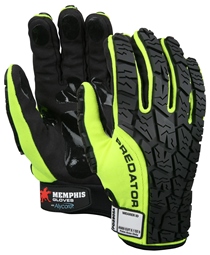 New cut-resistant materials experienced growth by exceeding the highest ANSI/ISEA cut performance levels. While these materials provided higher levels of cut protection, dexterity and sense of touch were a challenge.
New cut-resistant materials experienced growth by exceeding the highest ANSI/ISEA cut performance levels. While these materials provided higher levels of cut protection, dexterity and sense of touch were a challenge.
As with many innovations within our industry, time and redesigns have helped create both cut-resistant and user-friendly glove options. Back of hand attention has continued to grow most recently, as our industry is very close to adopting our first standard to provide a quantitative performance rating. Meanwhile, 2017 is the tenth anniversary of the introduction of the touchscreen cell phone. Growth of tablets and touchscreen devices has fostered opportunities in the industry for gloves that are touchscreen friendly.
Current-day test methods exist for abrasion, cut resistance, tensile/tear strength, puncture resistance, heat conductivity, and dexterity. Assets such as certified testing laboratories and in-field PPE survey analysis help differentiate sources of suppliers. Dedicated safety professionals are engaged at industrial workplaces to demonstrate products, provide training, and extend comprehensive protection programs. These services provide emphasis on cost savings, enhanced productivity, and risk reduction.
Recognize that one of our greatest challenges is to provide gloves that people will wear while performing their tasks; 70 percent of injuries in the workplace occur due to employees not wearing hand protection.
We are lucky to be in this golden era of hand protection. Our industry consists of a tight-knit group of individuals dedicated to promoting safety and protecting people. The International Glove Association (IGA) is our industry's best example. This association’s mission is to study, clarify, and recommend government action to help promote proper glove selection and use. Innovations from other industries continue to create opportunities for new glove styles. We are all in a race in an effort to utilize new fibers, technologies, and manufacturing processes to produce the next game-changing glove.
America’s workforce is much more sophisticated and task focused. Their expectations are to be outfitted with the proper garments to enhance productivity and be protected at the same time. Just as the medieval knights required task-specific protection, today’s worker is more of an industrial athlete requiring gear to enhance his or her performance.
This article originally appeared in the August 2017 issue of Occupational Health & Safety.